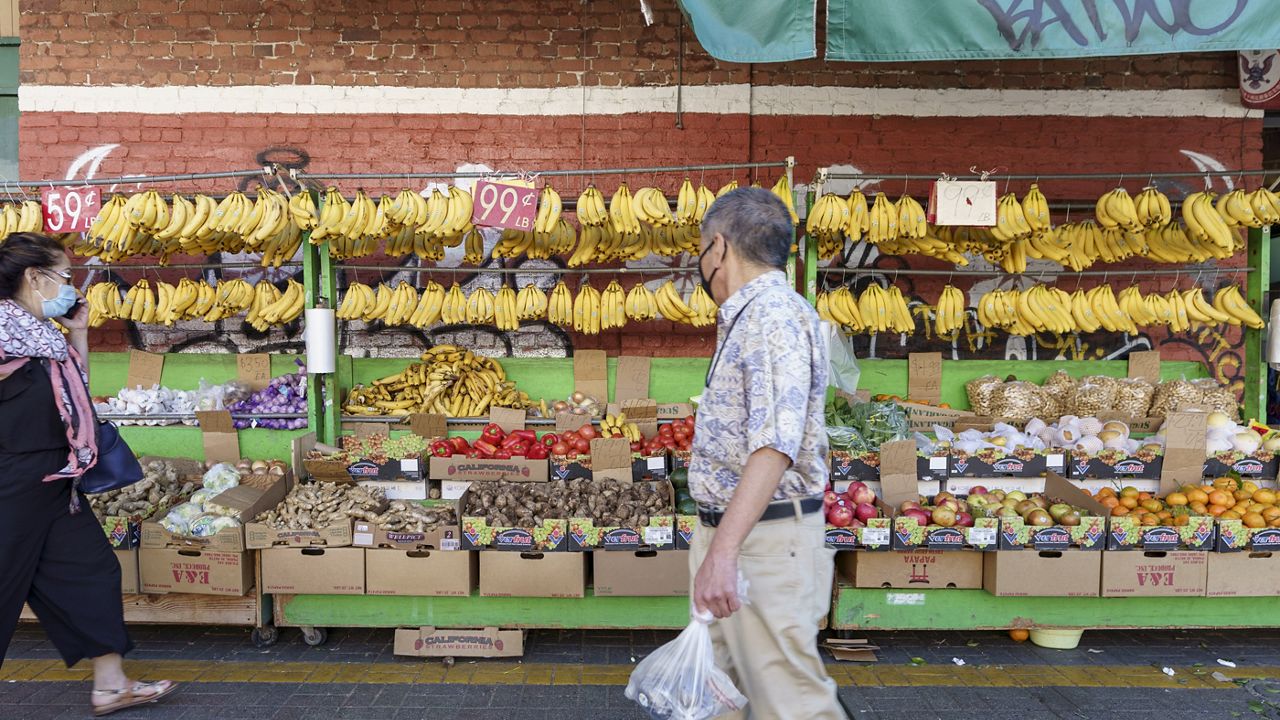HONOLULU — The City and County of Honolulu said its food waste-diversion project in Chinatown, the Oahu Compost Project, has been a success and the pilot project will continue for at least two years.
The project officially launched on Tuesday but was already in operation for the past three months, according to city officials who spoke at a news conference.
For the project, Aloha Harvest takes food waste from six restaurants in Chinatown and redistributes it to feed people, while food scraps are composted.
Oahu’s food waste accounts for 20% of the overall solid waste stream. The project keeps the food waste from going to H-POWER, Oahu’s waste-to-energy plant, where Oahu’s trash is burned and then the ash is taken to the landfill.
“There are so many environmental, social and economic reasons why we shouldn’t be incinerating our food when it could instead be used as a resource,” said Honolulu Mayor Rick Blangiardi in a news release. “I’m proud to see a collaborative project like this between the City and local organizations that only better the community, both inside and outside of Chinatown.”
The project was funded by a U.S. Department of Agriculture Natural Resources Conservation Service grant and by the City’s Department of Environmental Services. Other organizations involved in the effort are Aloha Harvest, Zero Waste Oahu, Sustainable Coastlines Hawaii, Full Circle Farm, Supersistence, and the City’s Office of Economic Revitalization.
Once a week, Aloha Harvest picks up bins of food scraps from the participating restaurants — the Daley, Encore Saloon, Pizza Mamo, Proof Social Club, the Pig and the Lady and Lam’s Kitchen — which are taken to Full Circle Farm in Waimanalo.
At the farm, Sustainable Coastlines Hawaii keeps an in-vessel composting system — a 20-foot shipping container with an auger system — that can compost 1,000 pounds of food scraps a day, which makes 500 pounds of usable soil. The composted soil is then used to help grow food on local farms.
“Within a year that’s 365,000 pounds of food scraps that's not going to the incinerator, that’s not going to the landfill, and we're creating over 180,000 pounds of compost that we can put back into the soil,” said Phil Acosta, executive director of Aloha Harvest, during a news conference. “Now imagine if we had a composting site at each one of the districts on Oahu.”
The mayor called the compost project in Chinatown a precursor to change how the City handles food waste.
“This is just the beginning,” Blangiardi said.
The City’s Department of Environmental Services Executive Director Roger Babcock said that his department is currently working on a project to collect food scraps from residential homes, following the Honolulu City Council’s passage of Bill 62 last summer. These food scraps will be composted with green waste from residential homes, which is already being composted.
“We’ll be rolling that out sometime in the near future,” said Babcock at the news conference.
Michelle Broder Van Dyke covers the Hawaiian Islands for Spectrum News Hawaii. Email her at michelle.brodervandyke@charter.com.



